HOUSE OF CARDS
by V. M. Amudha Yazhini
was always alone in my school, someone that people never called to have lunch with because I was dull and boring I thought I was okay being alone until he came along He had joined my school recently From what I have seen, he would sit alone at lunch, silent much like me munching away while he observed the other students One day, he started joining me during my solitary lunches. He never talked much. As time passed by we grew close, we talked and spent more time together. I admired him a lot. He always had a smile on his face despite his mouth that was ever so wordless. Even so, conversations with him were something that I always awaited.
His smile was not the only thing I observed as the bruises on his face and the scars on his hands not only caught my eye but also worried me Once in a while his balance toppled almost like he was hiding his wounds Every time, I asked him what was wrong, he would brush it off saying he was fine “I fell off from my bicycle, it's nothing, don’tworry” which was the constant deceptive line that I received Although I worried, I wanted to pretend that everything was actually fine I never knew pretending was a mistake and I had stayed quiet for far too long until it was too late “When are you going to invite me to your house?” I asked him expectant to which all he replied was “I can’t Things at home aren’t good ” He had an excuse every time My suspicions grew and I voiced my concerns, I exclaimed my disapproval and kept pestering him until he gave in
One day, he invited me It was fun until his father's car screeched and he arrived inside My friend’s eyes were a mix of shock and panic I understood that he did not intend for his father to come back and then what happened next made everything make sense, the scars, the wounds, everything made sense. The father started shouting at my friend and thrashed him till he bled right before me. Petrified at the sight, I yelled at him to stop but my voice was weak. His father looked furious. my eyes grew wide as he approached me, a lamp in his hand, I ran away, I sprinted with tears in my eyes before he could come at me as well I left my friend alone I shifted in my bed thinking about the incident, the guilt of leaving him followed by the fact that I was mad, mad at his father for abusing my friend and mad at my friend for hiding it Then I realised how hard it would be for him to report on his father This is why I took a decision for him I would report it no matter what
When I met him the next day, he begged me to never report his father to the police He said that he would be left in an orphanage and he didn’t want that “I don't want to be a orphan please “I was almost convinced till I saw his hands that were holding my shoulders to persuade me, Scars and wounds everywhere on his hand presumably from yesterday I felt guilty as the words played back in my mind, “I am a horrible friend I left him to get abused by his own father” A lump in my throat formed as I said, “okay, i won’t” knowing that it was a lie He was evidently hurting and I for one wouldn’t allow it anymore His lips curved wider and I knew that was the last time I am going to see him smile. I smiled back feeling bittersweet as we both hugged.
I dialled the police the next day. I ran to his house to see his father getting dragged by the police while my friend was sobbing behind him. He noticed me standing at the gate as his eyes looked at me in disbelief. He marched towards me, grabbed me by the collar of my shirt, anguish and betrayal written all over his face, he shouted, “you told them??” But his voice betrayed him; it was cracking yet aggressively loud My hands trembled, my throat throbbed ; with tears rolling down my face, I cried, “I am sorry” he hesitated a bit before shouting “He was my DAD WHY? WHY? ” I got on my knees whimpering as I continued “please, I am sorry” He screamed at my face, weeping, as he whispered “I never want to see you again” Then he got up leaving me on the ground still sobbing
I never saw him after that, up until thirteen years later He was working as a chef in a restaurant getting complimented on his skills as I watched him from the neighbouring table I was delighted to see him doing well and It made me tear up as my heart warmed up He noticed me as well when his eyes sidelined When he recognized me, his eyes grew wide; a faint smile appeared on his face, to honour our friendship and then he gave me a small nod, his face brightening I yearned to hear his voice, to be his friend, to see him smile, to ask him how he was doing and most of all to converse with him again
He didn’t say anything but I knew he didn’t need to I smiled to myself remembering, “He never really talked much, did he?” Our bond may have been as fragile as a house of cards before. Despite that I realized this time I can rebuild our friendship slow but stronger and protected.
V. M. Amudha Yazhini, the creative force behind VMAY Comics (published July 28, 2021), is currently a spirited undergraduate pharmacy student in Chennai, Tamil Nadu. A voracious reader and passionate storyteller, she weaves tales full of humor, adventure, thrills, and heart-wrenching barriers and defying expectations When she’s not reading or writing, Amudha delights in drawing funny cartoons, crafting, exploring imaginatively, and watching movies Her parents, both teachers, nurture her talents, inspiring the four unique stories she penned in VMAY Comics Each tale reflects her boundless creativity and vision of freedom, identity, and youthful wonder
As you turn the page, let the adventure begin –our book reviews await, promising literary delights and captivating tales!
Pic: Swapna Peri
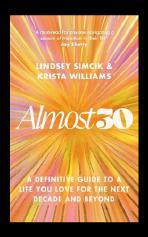
"Almost 30: A Definitive Guide to a Life You Love for the Next Decade and Beyond" by Lindsey Simcik and Krista Williams is an insightful and empowering guide tailored for individuals navigating the often tumultuous transition into their thirties The book acknowledges the intense pressure to have life figured out covering job, relationships, and self-identity and offers reassurance that this phase, marked by the astrological Saturn Return, is a profound period of growth and change Drawing from nearly a decade of hosting the popular "Almost 30" wellness podcast, the authors provide a blend of personal anecdotes, expert insights, and practical tools aimed at helping readers transform confusion and anxiety into clarity and self-love. The strength of this book lies in its authentic, relatable voice and the diverse range of resources it offers. Lindsey Simcik and Krista Williams, with their combined experience, include research-based practices, thought exercises, meditations, and journaling prompts designed to help readers explore their spirituality, mental health, and relationships deeply They also feature wisdom from prominent podcast guests such as Jay Shetty and Glennon Doyle, adding richness and a broad perspective to the content The book is structured to be a supportive companion, akin to the "big sister" guiding readers through a pivotal decade with humor, compassion, and honesty This book is a must-read if you're in your late twenties or going through a big life change Krista and Lindsey share everything they've learned about building a strong spiritual practice, creating meaningful relationships, finding financial stability, and discovering a fulfilling career They know what it feels like to be confused or stuck, and they offer a clear path to help you move forward just like they did.The book blends their personal stories with wise insights from the amazing guests on their podcast. It also includes thoughtful prompts and exercises that help you better understand yourself and what you truly want in life. Overall, "Almost 30" stands out as an essential read for anyone facing this critical decade of life, especially women. It empowers readers to embrace the uncertainties of approaching thirty with confidence, encouraging them to design a life they truly love for the next decade and beyond
The book offers a hopeful, practical roadmap for turning the "mess" of this transitional period into "magic," making it a valuable resource for personal development and self-discovery during a transformative life stage.
Where tails wag, trunks trumpet, and wisdom wears fur!
Get ready to swing through jungles, tiptoe across rice fields, and maybe even outsmart a very hungry jackal! “Animal Tales from India” isn’t just a book it’s a ticket to a wild and wonderful world where animals don’t just walk... they talk, teach, and tickle your funny bone! Chesta Wadhwani has cooked up a delightful stew of stories that mix age-old Indian folk wisdom with a big spoonful of laughter Elephants with opinions, clever little birds, proud peacocks, and mischief-making monkeys every page is a new adventure, bursting with charm, chuckles, and cheeky surprises. The best part? These tales sneak in little lessons about kindness, cleverness, and courage all without sounding like a grown-up lecture.
Perfect for curious cubs, giggly readers, and even grownups who need a break from boring things like taxes and to-do lists.
Almost 30 by Lindsey Simcik and Krista Williams
Animal Tales from India by Chesta Wadhwani
Audition by Katie Kitamura

Katie Kitamura’s "Audition" is an incisive and unsettling novel that interrogates performance both in the context of the stage and within the fraught intimacy of family life. Set against the backdrop of New York’s theater world, the novel follows an aging actress as she navigates the complexities of her marriage, her career, and a disturbing encounter with a young man named Xavier, whose obsession with her blurs the boundaries between reality, fantasy, and role-play Kitamura structures her book in nuanced, impressionistic scenes, foregrounding the porous nature of identity and the ways in which we endlessly audition for our roles parent, spouse, artist, even self. The resulting narrative is often haunting and uncomfortable, yet it vibrates with the emotional intensity of lived experience. Stylistically, Kitamura’s prose is measured, meticulous, and deeply interior. Her narrator’s consciousness, rendered in long, looping sentences filled with qualification and self-interrogation, creates a sense of claustrophobic intimacy. This insistent inwardness invites the reader to inhabit the narrator’s anxieties and self-doubt, offering no respite from the recursive, obsessive quality of her thoughts Kitamura’s approach excels at evoking the uncertainties of midlife, the sorrow of missed opportunities, and the complex alchemy of parent-child relationships, but it can also feel stifling at times, the narrative threatens to drown in its own analytical density The novel’s genius lies in its refusal to offer neat resolutions or clear boundaries Neither the relationships nor the characters’ motives are ever entirely legible, and Kitamura resists the temptation to explain or moralize The central relationship with Xavier as ambiguous surrogate son, stalker, and aspiring artist thrives in this ambiguity, exposing the vulnerabilities and vanities of all involved The actorly motif weaves through every aspect of the book, making Audition not only a meditation on theater, but also a profound inquiry into authenticity: are we ever more than our performances? Is familial love inevitably transactional, conditional, or even delusional? Kitamura threads these questions through her narrative with chilling precision. If Audition has a flaw, it lies in its relentless ambiguity and emotional detachment; the very qualities that make it so thematically rich may leave some readers cold or frustrated. The characters’ motivations are muddled, their connections diffuse, and Kitamura’s language so exacting in its dissection sometimes sacrifices narrative momentum for introspective digression Yet this is, arguably, the novel’s point: the slipperiness of identity, the impossibility of absolute understanding even, and perhaps especially, among those we love most In Audition, Kitamura has written a quietly devastating exploration of artifice and longing, a novel as challenging as it is rewarding, lingering in the mind long after the final act has ended.
The Last Days of Marilyn Monroe by James Patterson
In "The Last Days of Marilyn Monroe", bestselling author James Patterson turns his investigative eye to one of Hollywood’s most enduring and controversial deaths. With the precision of a seasoned journalist and the flair of a thriller writer, Patterson revisits the life
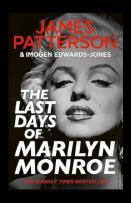
and untimely demise of Marilyn Monroe, blending historical detail, personal accounts, and unsettling implications to explore whether her death in 1962 was truly the overdose it was ruled to be or something far more complex The book dives deep into Monroe’s final weeks, painting a portrait of a woman caught in the crossfire of power, politics, and celebrity Patterson doesn’t just revisit the well-trodden rumors about her alleged relationships with President John F Kennedy and his brother Robert; he reexamines them through a lens sharpened by declassified intelligence files, insider interviews, and psychological insight Monroe is shown not merely as a tragic figure, but as a woman struggling for control over her narrative in a world where powerful men dictated the rules. The result is a deeply human yet disturbingly political portrait of one of the 20th century’s most iconic figures. Though Patterson stops short of drawing firm conclusions, "The Last Days of Marilyn Monroe" raises significant questions about the circumstances surrounding her death and about the forces that may have shaped its aftermath. The book reads like a cold case file wrapped in cinematic prose, and it invites readers to look beyond the myth of Marilyn to the fragile reality behind it
For those who believe the official story never quite fit, Patterson offers a compelling reason to take a second look.
The first book of the Essential India Editions series offers a captivating deep dive into the heart of India's cultural roots through the lens of Bharata Natyam.
Tracing its evolution from sacred temple dance to global stage art, the book skillfully charts the influence of social reform,
colonial intervention, and visionary figures like Gangaimuthu Nattuvanar and Rukmini Devi Arundale These pioneers not only refined the form and technique but also transformed Bharata Natyam into a pedagogical, secular art form, preserving its spiritual depth while broadening its reach Institutions such as Kalakshetra are highlighted as hubs of cultural revival, where dance became both an educational tool and a symbol of India’s national identity Further the book honors the maestros who shaped Bharata Natyam’s stylistic diversity From the musical brilliance of C Subbaraya Pillai to the emotionally resonant performances of Tanjore Balasaraswati, each chapter reveres the gurus and their students who passed down and transformed their distinctive styles. The traditions of Pandanallur and Vazhuvur are explored with vivid detail, showing how innovations in choreography, presentation, and training gave rise to new possibilities within the framework of classical form. The dancer’s journey rooted in rigorous training, rhythmic mastery, and expressive abhinaya is portrayed as both a disciplined craft and a spiritual quest, where every movement is imbued with meaning and memory The book’s final section gracefully shifts focus to the subtle art of costume and the philosophical foundations of Indian dance It delves into the spiritual symbolism of the sari and how fabric, color, and draping become integral to performance The narrative underscores that Bharata Natyam is more than dance it's a philosophy in motion, an art that mirrors cosmic cycles and human consciousness As it embraces contemporary reinterpretation while holding fast to ancient wisdom, Bharata Natyam is portrayed as a living, breathing tradition timeless yet ever-evolving
This edition stands as both a tribute and a call to keep India's artistic heritage vibrant for future generations.
Queers by Churnjeet Mahn, Rohit K. Dasgupta, and DJ Ritu
"Desi Queers: LGBTQ+ South Asians and Cultural Belonging in Britain" by Churnjeet Mahn, Rohit K Dasgupta, and DJ Ritu is a profoundly evocative and essential volume that reclaims and amplifies the often-silenced histories of queer South Asians in the UK With scholarly rigour and emotional
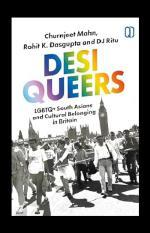
sensitivity, the authors map out the dual layers of marginalization faced by these communities ostracized within traditional South Asian cultural frameworks and sidelined within predominantly white queer spaces Through a rich tapestry of oral histories, archival material, and artistic expression, *Desi Queers* traces the emergence and evolution of queer South Asian resistance and cultural identity from the 1970s onwards, bringing to light the courage, creativity, and tenacity of those who shaped a unique and vital strand of British queer activism This book distinguishes itself by placing emotional and embodied experiences at its core, pulling the personal into focus with intention and care Rather than treating activism as an abstract concept, the authors explore how individuals actively negotiate identity, belonging, and survival in their daily lives Pioneering groups like Shakti and Naz don’t simply appear in the narrative they are celebrated as powerful agents of change, building sanctuaries that offered affirmation and solidarity. Mahn, Dasgupta, and Ritu treat memory not as something to be preserved passively, but as something they actively honour especially those memories that history has neglected or silenced. Their commitment doesn’t just transform the book into an archive; it makes it a living tribute to the courage and complexity of queer South Asian lives Ultimately, "Desi Queers" is a radiant work of intersectional history, a chronicle of defiance and healing that challenges monolithic portrayals of queerness and South Asian identity alike It is a literary and cultural intervention that centers lived realities messy, resilient, beautiful and invites readers to witness and honour them This book is not merely documentation; it is an act of love, reclamation, and visibility
A compelling contribution to LGBTQ+ and diasporic literature, it stands as a strong tribute to the enduring power of resistance, joy, and radical belonging across borders and generations
Desi
Dance Of Freedom by Leela Samson
Deviants by Santanu Bhattacharya
Santanu Bhattacharya’s "Deviants: ‘A born storyteller’ Max Porter" is a rich, intergenerational novel that deftly explores queerness, family, and identity within the evolving landscape of Indian society.
Spanning fifty years, the story follows three
gay men from the same family Vivaan, his uncle Mambro, and Mambro’s uncle Sukumar each navigating coming of age in vastly different cultural and historical contexts Through their intertwined lives, Bhattacharya traces the shifting terrain of queer existence in India, weaving a narrative marked by secrecy, constraint, and the slow emergence of possibility At its core, "Deviants" is a deeply human story about the search for love, dignity, and belonging across generations What elevates the novel is Bhattacharya’s commitment to emotional authenticity Rather than smoothing over discomforts, he embraces the complexities of queer experience in all its contradictions Vivaan’s tentative freedom in the present day stands in stark contrast to Sukumar’s silent, closeted life, while Mambro, caught between eras, carries the scars of both repression and progress. Bhattacharya resists neat resolutions or romanticized progress, instead offering a nuanced portrait of change marked by both joy and enduring trauma. His characters live and breathe on the page, shaped as much by personal choices as by cultural and generational forces. One of "Deviants’" most striking achievements lies in its portrayal of familial bonds. Bhattacharya approaches intergenerational relationships with tenderness and depth, highlighting not just the pain passed down through silence, but the quiet gestures of care, resilience, and solidarity that often go unspoken Set against the backdrop of Bengali culture, the novel is richly textured with ritual, language, and social expectations, grounding the characters’ personal struggles in a broader cultural frame
With lyrical prose and profound insight, "Deviants" is both an evocative literary work and a vital reclaiming of queer histories—offering readers a moving reminder of how love and memory endure even in the shadows.
Endling by Maria Reva
"Endling" by Maria Reva is a quietly haunting novel set in a world not destroyed by catastrophe, but scarred by slow-moving environmental and emotional decay. At its center is Yeva, a passionate environmental researcher whose work documenting endangered snails mirrors her internal struggle to
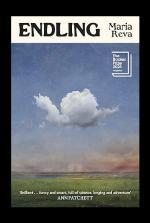
hold on to hope To survive financially, she works as a companion on romance tours for international men, a job that starkly contrasts with her quiet mission to protect the voiceless species on the brink of extinction Her mobile lab, cobbled together with determination, becomes a symbol of her resilience each snail she saves a fragile testament to belief in a better world Yeva’s journey becomes increasingly intertwined with unexpected relationships, especially a longdistance connection with a Hawaiian conservationist who shares her reverence for vanishing lifeforms Their correspondence provides comfort and solidarity, standing in defiance against global indifference to ecological collapse. As her scientific work collides with personal longing and loneliness, Reva reveals how perseverance and heartbreak coexist in a time of quiet crisis. The novel deepens in its third section as Yeva's isolation sharpens. Her beauty offers no protection from the creeping disenchantment that shadows her life. Strained family dynamics, professional setbacks, and the heartbreak of losing creatures she’s sworn to protect lead her into seclusion and alcoholism Reva’s portrayal of Yeva’s descent marked by grief, loss, and fading purpose is unflinching, yet never without compassion Beyond Yeva, "Endling" expands its focus to the intersecting lives of women navigating the matchmaking industry and broader social upheavals Masha, once transformed by a chance encounter with love, now runs Romeo Meets Yulia, an agency that supports women entering international marriages Her activism is informed by the painful realities of those trapped in isolating or abusive relationships Meanwhile, Nastia, a young artist shaped by her revolutionary mother and Ukraine’s shifting political landscape, struggles to assert her authenticity in a world of performance and inherited expectations. Through these interwoven narratives, Reva explores ecological fragility, emotional endurance, and the toll of systemic inequity. "Endling" is a meditation on loss both biological and personal and the quiet forms of resistance that persist when everything else begins to vanish.
With lyrical precision, Reva captures the ache of trying to hold on to a disappearing species, a fading relationship, a fragile hope in a world too distracted to notice what’s being lost.
Flashlight by Susan Choi
In "Flashlight", Susan Choi crafts a profoundly layered and emotionally resonant novel that interweaves the lives of disparate characters grappling with identity, displacement, and the moral complexities of growing up in fractured worlds At the heart of the novel is Louisa, a girl whose childhood innocence is slowly overtaken by
an awareness of loss and ambiguity Her internal world is vividly drawn rich with memories of handmade dollhouses and beach walks with her father, yet tinged with unease, grief, and curiosity about adult inconsistencies Through therapy sessions with Dr Brickner and quiet reflections on her father’s death, Louisa becomes a vessel for exploring trauma, agency, and the blurry borders between imagination and reality Parallel to Louisa’s journey is Hiroshi’s, a young boy caught in the turbulent currents of postwar Japan. Born to Korean parents, Hiroshi’s life is shaped by subtle yet seismic shifts: from school uniform dilemmas to the pressure of hiding his heritage in a society that demands conformity. Choi captures the poignancy of Hiroshi’s quiet acts of resistance his fascination with maps, his mother’s resourceful labor, his longing for belonging in a narrative that reveals the emotional toll of colonization and the enduring scars of cultural erasure His story unfolds with delicate restraint, contrasting private dreams of stability with the oppressive weight of political ideologies that threaten to consume his family’s identity The novel deepens as Hiroshi’s family becomes increasingly involved in the Korean reunification movement, aligning with North Korea amid threats from South Korean authorities Choi portrays the tension within Hiroshi’s household as both a domestic and political battleground He is burdened with transcribing declarations of Korean liberation while navigating the alienation of being denied access to elite Japanese universities These moments reveal systemic discrimination and personal disillusionment, as Hiroshi questions the narratives imposed on him His family’s decision to repatriate to North Korea, fueled by state propaganda and promises of prosperity, places him at a crossroads between logic and loyalty, love and loss. In a final narrative thread, Choi introduces Anne a woman whose own struggles with trauma, motherhood, and escape bring yet another dimension to the novel’s exploration of identity and survival. Her journey, alongside that of Seok, Hiroshi’s brother, and his failed attempts to secure a future in the U.S., brings "Flashlight" to a poignant crescendo Woven with subtle grace and emotional intelligence, Choi’s novel is a masterful meditation on fractured families, political disillusionment, and the fragile light of hope that flickers in the most uncertain of times.
Flesh by David Szalay
"Flesh" by David Szalay is a haunting and unflinchingly intimate portrayal of a young man’s coming-of-age in a small, emotionally stagnant town. At the center of the novel is István, a boy navigating the turbulent terrain of adolescence, sexuality, and identity His experiences unfold through interactions with an older
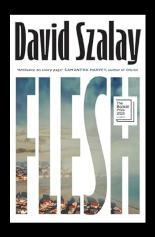
woman whose emotional assertiveness both intrigues and disturbs him As István contends with the complex dynamics of their intimacy marked by moments of desire, discomfort, and shame Szalay paints a raw, psychologically rich portrait of a youth teetering on the edge of manhood, yearning for understanding and yet recoiling from the very thing he seeks Szalay excels in contrasting the mundane rhythm of István’s daily life shopping with his grandmother, aimless strolls through town, brief exchanges with neighbors with the surreal, emotionally charged encounters that punctuate his private world. These dualities heighten the tension of his internal struggle, as fleeting tenderness and unsettling interactions blur the lines between care and control, consent and confusion. As István grows, his longing for connection becomes entangled with guilt and the fear of being exposed, revealing a vulnerable portrait of someone caught in the liminal space between innocence and corruption As the novel progresses, the tone darkens The emotional weight of rejection, obsession, and blurred boundaries leads to moments of confrontation and chaos, culminating in a violent accident that brings István under police scrutiny Szalay seamlessly shifts the narrative from personal turmoil to broader, grittier themes, introducing a shadowy underworld of drugs and illicit dealings in Croatia These episodes, while seemingly detached from István’s emotional arc, deepen the sense of instability and rootlessness that defines his young adulthood Through it all, Szalay remains attentive to the psychological complexity of his characters, crafting scenes that are both intimate and unsettling The final chapters of "Flesh" immerse the reader in a haze of substance-fueled escapism and fragmented relationships. As István drifts through parties, sexual liaisons, and military service, Szalay captures the disorientation and quiet despair of youth in search of meaning. Despite the bleakness, the novel is not without moments of humor, tenderness, and shared humanity.
In "Flesh", Szalay delivers a bold and evocative exploration of adolescence, desire, and emotional displacement layered, provocative, and ultimately unforgettable.
Food Noise by Dr Jack Mosley
Dr. Jack Mosley’s "Food Noise: How Weight Loss Medications & Smart Nutrition Can Silence Your Cravings" offers a timely and nuanced exploration of the rapidly evolving world of weight-loss medications, especially GLP-1 drugs like Ozempic and Wegovy Mosley carefully unpacks the science behind how these drugs suppress
appetite and reduce the "food noise" the incessant internal chatter and cravings for unhealthy foods that drive overeating While acknowledging the impressive results and medical revolution these medications represent, the book is careful not to present them as a magic cure but as one tool within a broader health strategy The holistic approach inside the book makes "Food Noise " different He builds on his father Michael Mosley’s legacy of lifestyle medicine, blending expert insights and real-life stories with practical guidance throughout the book It emphasizes the critical role of nutrition, offering 50 recipes and a 7-day meal plan to help readers eat well even with reduced appetite The book also tackles less-discussed issues such as the risk of muscle loss versus fat loss, micronutrient deficiencies common in obesity, and potential side effects of the drugs Most importantly, Mosley addresses the sustainability challenge how to build lasting healthy habits to maintain weight loss after stopping medication. "Food Noise" serves as both an educational resource and a compassionate companion for anyone navigating weight loss today. Its strength lies in blending medical science, practical nutrition advice, and a realistic perspective on the limitations and risks of new medications.
By shining a light on the complexities of appetite control and the psychological "food noise," Mosley invites readers to regain control over their eating habits not just through drugs, but also through mindful, informed choices that nourish both body and mind for the long term.
In “From Root to Rain”, author Sneha Verghese delivers a vibrant collection of 25 true stories that peel back the layers of nature to reveal its most astonishing secrets From bacteria that work in teams to birds that behave like bats, and plants that cleverly disguise themselves as stones, each chapter offers a fascinating
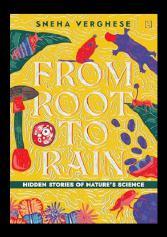
glimpse into the natural world’s most unexpected behaviors. Told with a lively, imaginative tone, these stories take readers on a global journey from forest floors to ocean depths transforming real science into moments of wonder. What sets this book apart is its gift for making complex scientific concepts feel not just accessible, but exciting. Sneha has a knack for storytelling that captures the curiosity of young readers without ever oversimplifying the content. Each story is followed by a clear explanation of the science behind the scenes, helping readers connect the dots between fiction-like facts and real-world phenomena The writing is playful yet informative, and the illustrations complement the narratives beautifully particularly helpful for visual learners and young minds eager to explore From Root to Rain is perfect for children, teachers, and even adults who appreciate learning through storytelling The book’s short, standalone chapters make it ideal for dipping in and out, sparking spontaneous curiosity and conversation Readers don’t need any prior science knowledge to enjoy it just a love for discovery
With its engaging prose, thought-provoking topics, and ability to make science feel magical, this book is a valuable addition to any personal library and a wonderful way to fall in love with the hidden brilliance of the natural world.
From Root to Rain by Sneha Verghese
Heavily Meditated by Dave Asprey
What do birds obsessed with blue, toolwielding octopuses, and butterflies that hypnotize ants have in common? They all star in "From Sea to Sky" by Sneha Verghese, a mind-bending collection of 25 science stories that uncover the weirdest, wildest, and most wonderful sides of nature.
With tales that whisk readers from ocean depths to mountaintops and everywhere in between, this book is like a nature documentary wrapped in the charm of bedtime storytelling It’s a treasure trove for curious minds whether 8 or 80 Sneha’s magical ability to make complex scientific ideas not only understandable but absolutely delightful is that what makes this book stand out Each story reads like a curious mystery unraveled, with fun narratives that seamlessly transition into science explanations Ever wondered if sloths are really that slow or how a creature could survive in space? You’ll find answers here along with plenty of “Did you know?” moments that linger long after the pages are turned The stories don’t just share facts; they spark questions, open minds, and invite readers to see the natural world with fresh, fascinated eyes Ideal for young explorers, budding scientists, and lifelong learners, "From Sea to Sky" is proof that science doesn’t have to be dry or daunting The bite-sized chapters, friendly tone, and eye-catching illustrations make this a joy to read and reread. Though a few more vibrant visuals could elevate it even further, the book is already a gem. It’s perfect for classrooms, libraries, or as a thoughtful gift that inspires wonder.
If you’ve ever wanted to fall in love with science through the eyes of nature, this is the book that will take you there.
"Heavily Meditated: The fast path to remove your triggers, dissolve stress and achieve inner peace" by Dave Asprey is an insightful book that guides readers on how to quickly remove emotional triggers, reduce stress, and find inner peace through a combination of ancient wisdom and modern science Asprey, a wellknown biohacker and creator of

Bulletproof Coffee, shares his personal journey overcoming brain fog and chronic fatigue. He introduces a set of practical techniques like meditation, breathwork, neurofeedback, and even controlled pain exposure to help readers upgrade their mental and physical states The book is designed to help people enhance brain function, increase emotional resilience, and unlock their hidden potential for a healthier, more productive life The book looks different because it uniquely merges advances in technology with age-old spiritual traditions Drawing from his “40 Years of Zen” program, Asprey integrates contemporary tools like EEG for brain feedback, the considered use of psychedelics, and methods of sexual energy management with meditation and mindfulness exercises This blend equips readers with a thorough toolkit designed for more than just calming the mind; it aims to foster creativity, enhance performance, and unlock intuition. The message throughout the book is empowering: people have the ability to control their mental state, and cultivating habits such as forgiveness, gratitude, and compassion are central to personal growth. For anyone who wants a framework that’s scientific yet holistic to tackle stress and raise their level of awareness, this book delivers both practical wisdom and inspiration. While the book is packed with detailed information and techniques, some reviewers noted it can feel overwhelming at times, and a few felt parts of it resemble promotion for Asprey's broader business ventures Nevertheless, it is praised by experts in neuroscience and mental health for its innovative ideas on mental clarity and resilience Overall, "Heavily Meditated" is a powerful resource for anyone seeking fast and effective ways to improve mental health, productivity, and emotional well-being through a fusion of biohacking and ancient meditative practices.

From Sea to Sky by Sneha Verghese
Kathryn Hurlock’s "Holy Places: How Pilgrimage Changed the World" offers a compelling and wide-ranging exploration of pilgrimage as a transformative human practice that has shaped religion, culture, and politics across centuries and continents By examining nineteen sacred sites from
diverse traditions ranging from Jerusalem’s temples to the banks of the Ganges, and from Lourdes to Buenos Aires Hurlock illuminates how pilgrimage is more than a spiritual journey; it is an act deeply intertwined with identity, power, community, and historical narrative The book expertly conveys how both ancient and modern pilgrims undertake these journeys, blending faith with political symbolism and social significance, an interplay that has had profound impacts on cities, dynasties, and societies worldwide Hurlock’s work stands out for its global approach and for situating pilgrimage within broader contexts such as economics, tourism, and diplomacy, rather than treating it solely as a religious or personal experience She reveals surprising facets such as secular pilgrimages to political figures’ graves, like Eva Perón’s in Buenos Aires, which mirror older saintly veneration rituals and highlights the political dimensions of pilgrimage, such as imperial pilgrimages in China used to legitimize rule. This nuance and depth capture pilgrimage as a living tradition that continuously evolves and remains relevant today, providing respite, community, and renewal in an increasingly fast-paced world. The strength of "Holy Places" lies in its meticulous historical research combined with accessible storytelling that challenges readers to reconsider pilgrimage’s multifaceted role in shaping human civilization and cultural memory. The book is not only a scholarly contribution but also an invitation to understand pilgrimage as a universal human impulse with enduring power to unite people across cultures and epochs
For anyone interested in faith, history, or cultural anthropology, Hurlock’s study offers a richly textured and illuminating journey through the holy places that continue to inspire millions around the globe.
Language of The Immortals by G. N. Devy “LANGUAGE OF THE IMMORTALS - A CONCISE STUDY OF SANSKRIT” by G. N. Devy takes readers on a fascinating journey through the story of Sanskrit, one of the oldest and most respected languages in the world. Though it's no longer widely spoken, Sanskrit continues to play a big role in
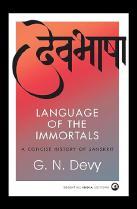
India’s spiritual, cultural, and intellectual life The book shows how Sanskrit was more than just a language it was seen as a divine gift, especially through sacred texts like the Vedas and Upanishads. Even today, its beauty, structure, and deep meanings continue to inspire people around the world. The story of Sanskrit is full of interesting contrasts: it's rarely used in daily life but remains a powerful symbol of India's ancient wisdom and identity. The author also explores how Sanskrit developed, especially through oral traditions where people memorized long hymns and passed them down through generations. The book explains that Sanskrit wasn't just spoken or written it was sung, remembered, and deeply felt Debates about its origins and connections to other languages are explained in a clear and thoughtful way It also touches on how colonial scholars and Indian thinkers viewed the language, sometimes with pride and sometimes with controversy From the mysterious Indus script to the powerful chants of the Vedas, Sanskrit is shown as a language shaped by both history and faith As time went on, the use of Sanskrit declined with the rise of regional languages like Marathi and Bengali However, its importance didn’t fade Scholars continued to copy and study Sanskrit texts, keeping the tradition alive The book also shows how Sanskrit helped shape social and religious systems, especially through rituals and education Even when people challenged its dominance, the language remained a strong symbol of cultural pride.
This book is a great introduction to how Sanskrit shaped India and how its echoes still influence the world today.
Holy Places by Kathryn Hurlock
H Jackson Brown’s "Life’s Little Instruction Book" feels like having a wise, gentle friend offering small nudges in the right direction
Each page delivers bite-sized pieces of advice sometimes as simple as “wave at kids on school buses,” sometimes as weighty as “don’t burn bridges ” Brown’s words are
unpretentious and direct, sidestepping elaborate stories in favor of universal truths anyone can internalize The result is a book you might leave on a coffee table, flip open at random, and walk away with a smile What makes Brown's compilation so endearing is its sincerity There’s a warmth to the reminders, an underlying kindness that goes beyond clichés For stressed parents, college graduates, or anyone in need of a gentle pick-me-up, these instructions have a knack for hitting just the right note. Even if not every snippet resonates, chances are you’ll find at least a handful that stick with you and brighten your day. Still, there’s no getting around the fact that some of the advice can border on the obvious, or even the naive. This isn't the book for deep philosophical dives or nuanced personal stories. But within its simplicity lies its charm it’s not trying to reinvent your life, just add a touch of lightness and perspective.
"Life’s Little Instruction Book" is best savored in small doses, whenever the day calls for a quick dose of hope and heart.
In "M.S. Swaminathan: The man who fed India", Priyambada Jayakumar offers a compelling and richly detailed portrait of one of India’s most transformative scientists. Through eloquent prose and a deeply empathetic lens, Jayakumar captures the life of Mankombu Sambasivan Swaminathan not merely as the architect of India’s Green Revolution, but as a man whose scientific

vision was grounded in Gandhian humility, environmental ethics, and an unwavering commitment to social justice. From his early childhood in Kerala to the global stage of agricultural science, the biography follows Swaminathan’s journey with clarity, compassion, and purpose. The book explores how Swaminathan’s formative years shaped by nature, family values, and the haunting memory of the 1943 Bengal famine sparked a lifelong mission to ensure food security for all. Drawing from both personal anecdotes and historical events, Jayakumar presents a man whose life was as much about ideas as it was about impact Swaminathan’s collaborations with global figures like Norman Borlaug, and his leadership in introducing high-yield wheat varieties turned a famine-prone India into a self-reliant nation Yet the book never reduces him to a scientist alone; it reveals a thinker, reformer, and humanist committed to blending science with compassion While Swaminathan is rightly celebrated for his pivotal role in India’s Green Revolution, Jayakumar’s account extends well beyond those crucial years With admirable depth, the book highlights his tireless efforts to promote sustainable agriculture, rural development, and ecological harmony Swaminathan’s initiatives weren’t just about increasing yields they were about empowering farmers, especially women, and preserving the planet’s resources for future generations. The founding of the M.S. Swaminathan Research Foundation emerges as a natural extension of his belief that science must serve the most vulnerable. The book succeeds in portraying Swaminathan as a rare figure: a scientist who believed not only in numbers and yields but in dignity and human rights. The book closes with a reflection on his enduring influence, especially after receiving India’s highest civilian honor, the Bharat Ratna, posthumously His life becomes a blueprint for future generations: a call to pursue knowledge not for personal glory but for public good
In a world grappling with ecological crises and rising inequality, "M.S. Swaminathan: The man who fed India" thus reminds us that the true purpose of science is service.
Life’s Little Instruction Book by H. Jackson Brown
M.S. Swaminathan by Priyambada Jayakumar
Sharanya Manivannan
There’s something quietly powerful about "Mermaids in the Moonlight" a picture book that feels like both a lullaby and a lesson in remembering Sharanya Manivannan invites us into a moonlit boat ride, where a little girl named Nilavoli listens as her mother tells stories that drift up from
the waters of the Kallady Lagoon These aren’t just bedtime tales they are doorways into deeper worlds, where mermaids from across the globe swim through legend, memory, and myth As Nilavoli listens, the book gently unfolds into something more than a collection of magical beings The mermaids here are beautifully diverse some are regal, some mischievous, some queer, some disabled all of them fully realized Manivannan doesn’t shy away from complexity Her mermaids carry echoes of grief and hope, of displacement and belonging Hints of the Sri Lankan civil war and the 2004 tsunami flicker through the stories, grounding the fantasy in lived reality. And as both writer and illustrator, she creates a visual world that feels intimate, poetic, and deeply tender. What lingers long after the last page is turned isn’t just the beauty of the artwork or the richness of the stories it’s the feeling of having been told something important in a gentle voice. Mermaids in the Moonlight offers children a magical, inclusive vision of mythology, and gives adults a quiet space to reflect on the power of storytelling across generations
It’s a book that invites us to listen to voices in the water, and in ourselves.
In "Mujib's Blunders: The Power and the Plot Behind His Killing", veteran journalist Manash Ghosh delivers a searing, first-hand account of the political missteps and internal betrayals that set the stage for Sheikh Mujibur Rahman’s tragic downfall. With the precision of an insider and the clarity of a seasoned observer, Ghosh traces how Mujib, despite being the architect of
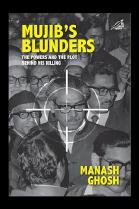
Bangladesh’s liberation, faltered in statecraft after independence From appointing pro-Pakistani collaborators to powerful positions, to sidelining trusted comrades like Tajuddin Ahmed, the book paints a sobering portrait of a visionary leader caught in the web of geopolitics, misplaced trust, and mounting paranoia Author Manash Ghosh’s account is particularly gripping in its examination of Mujib’s drift toward authoritarianism. The formation of BAKSAL and suppression of the free press, despite dire warnings, signaled a desperate move to consolidate power a decision that proved fatal. The author unpacks how Mujib’s attempts to appease Islamabad and curb Indian influence paradoxically made him vulnerable to the very forces that sought his demise. The backdrop of rising Islamic fundamentalism, stoked by Mujib’s own creation of an Islamic foundation, adds a chilling layer to the narrative Ghosh connects these events to the broader political currents in South Asia, offering both historical insight and contemporary relevance More than just a political biography, "Mujib’s Blunders" is a riveting chronicle of ambition, betrayal, and the high cost of miscalculation Ghosh captures the tension of those post-liberation years with urgency and authority, making this a vital read for anyone interested in the politics of South Asia As a follow-up to *Bangladesh War: Report from Ground Zero*, this book cements Ghosh’s place as a leading voice on Bangladesh’s turbulent history
It is both a cautionary tale and a compelling political thriller—one that echoes powerfully in today’s fractured geopolitical landscape.
Mermaids in the Moonlight by
Mujib's Blunders by Manash Ghosh
Not Quite Dead Yet by Holly Jackson
Holly Jackson's "Not Quite Dead Yet" is a gripping adult thriller that centers on Jet Mason, who, after a brutal attack leaves her with a fatal head injury, has only seven days to solve her own murder The novel unfolds as Jet, with the help of her childhood friend Billy, races against time
through a web of secrets, family drama, and small-town intrigue Jackson’s signature fast-paced, twist-laden storytelling blends humor, suspense, and emotional depth, making Jet’s journey both heartbreaking and engaging The characters are a standout aspect of the book, particularly Jet with her cynical, sarcastic demeanor that balances the story’s darker themes Billy's loyalty and warmth complement Jet’s sharp wit, creating a compelling dynamic that anchors the narrative emotionally. The novel explores poignant themes such as mortality, resilience, and the importance of facing life on one’s own terms. While some plot twists and reveals may feel slightly telegraphed or underwhelming, the overall story maintains an engaging tension that keeps readers guessing until the very end.[ "Not Quite Dead Yet" has been praised for its original concept and well-developed small-town setting, although some readers note a slow start and moments where the plot may stretch realism The ending is described as both shocking and fitting, leaving a lasting emotional impact that resonates beyond the final page
Fans of Holly Jackson’s YA work will appreciate this adult thriller’s familiar voice infused with mature themes, making it a compelling read for mystery and thriller enthusiasts alike.
"Ocean: Earth’s Last Wilderness" is a beautiful and powerful book that takes readers deep into the world of our oceans Written by legendary naturalist David Attenborough and environmental expert Colin Butfield, it shares stories from eight different ocean habitats like coral reefs,
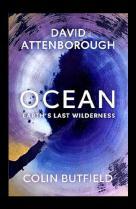
deep sea, Arctic waters, and kelp forests. Attenborough’s personal memories and experiences from years of exploring the sea are filled with wonder and emotion. Butfield adds clear, updated science, making the book both touching and informative. Together, they remind us how amazing and important the ocean is and how much it needs our protection. Reading this book feels like watching a documentary and a truly captivating one at that. The authors guide us through vibrant reefs, dense mangrove forests, icy Arctic waters, and the mysterious depths of the Southern Ocean Along the way, we witness how marine and land-based creatures adapt to survive in their ever-changing environments The effects of human activity are thoughtfully included, along with uplifting stories of community-led conservation and the powerful role of Indigenous knowledge in preserving these ecosystems The photos and illustrations are stunning, and Attenborough’s behind-the-scenes stories from his filming career are a real treat especially for animal lovers and whale fans like myself This book is more than just a collection of facts it’s a heartfelt message It feels like a journey through the ocean in book form, filled with awe, urgency, and hope Whether you're curious about what it’s like to glide through a kelp forest, admire the brilliance of coral reefs, or dive into the darkness of the deep sea, "Ocean" invites you in. The writing is clear and easy to follow, with helpful extras like an index, reading suggestions, and a preface and afterword that bring everything together.
It’s a wonderful read for anyone who cares about the planet and wants to learn how we can still protect and heal our last true wilderness.
Ocean by David Attenborough & Colin Butfield
Love by Marie Rutkoski
Marie Rutkoski's "Ordinary Love" is a deeply moving and character-driven novel that explores themes of love, abuse, and selfdiscovery through the life of Emily The story unfolds in dual timelines, following Emily as she navigates a toxic marriage with a manipulative husband and recalls her
intense young love with Gen, her best friend turned Olympic athlete. Their reunion after years apart rekindles powerful emotions and forces Emily to confront her past and reconsider what she deserves for her future. Rutkoski's writing crafts these characters with intimacy and detail, making the reader invested in their struggles and growth, particularly highlighting the complexity and hope found in queer love The novel stands out for its nuanced portrayal of domestic abuse, capturing the emotional manipulation and pain without overshadowing the romance or moments of hope Rutkoski balances the harsh realities of Emily’s present with the sweetness and heartbreak of her first love, presenting a layered narrative about courage, second chances, and authenticity The prose is often described as lush and introspective, inviting readers to deeply empathize with Emily’s journey While some find the pacing slow and the timeline shifts a bit complex, the emotional depth and literary style enrich the experience, offering a story that is as thoughtful as it is heartfelt "Ordinary Love" is not just a romance but a tender exploration of identity, family, and the resilience it takes to reclaim happiness Emily’s bisexuality and relationship with the queer community are meaningfully represented, adding further richness to the story. This novel is particularly recommended for readers who appreciate literary fiction that focuses on character emotions and personal growth rather than plot-heavy narratives.
Ultimately, it is a poignant and hopeful tale about finding love that endures beyond fear and pain, making it a memorable and inspiring read.
"Pushpa and the Pushpak Vimana" by Ishan Trivedi is a joyful and heartwarming reimagining of Lord Rama’s return to Ayodhya, told through the eyes of a spirited little girl named Pushpa While the entire city is brimming with excitement to welcome their beloved Lord, there’s a small problem
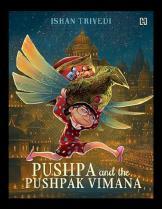
Ayodhya is wrapped in darkness! With no sparkle in the sky and no glow on the ground, how will the Pushpak Vimana the golden flying chariot find its way home? Enter Pushpa, a young girl bursting with imagination, courage, and determination. Through her clever thinking and bright spirit, she finds a way to light up the city and the hearts of everyone around her. Ishan Trivedi masterfully blends Indian mythology with the warmth of a modern bedtime story, creating a tale that is both educational and enchanting The vibrant illustrations add a layer of magic that captures the festive mood and cultural richness of the occasion This charming picture book is not just a myth retold; it’s a celebration of creativity, tradition, and the power of one small child to make a big difference
Ideal for storytime with family, Pushpa and the Pushpak Vimana offers young readers a gentle introduction to the Ramayana and Indian heritage, all wrapped up in a story full of light, love, and wonder.
Ordinary
Pushpa and the Pushpak Vimana by Ishan Trivedi
Queeristan by Parmesh
Shahani
"Queeristan: LGBTQ Inclusion in the Indian Workplace" by Parmesh Shahani is a groundbreaking book that offers a practical roadmap for building inclusive, diverse, and compassionate workplaces in India Drawing from his own experience as an out and proud gay man in the Indian corporate world,
Shahani weaves together personal stories, actionable strategies, and insightful data to underline the urgent need for LGBTQ-friendly policies in business environments. After the Supreme Court of India decriminalized Section 377, Shahani felt compelled to document the shifts and outline a path for further progress, making this book an essential guide for companies and their leaders who seek both social justice and better business outcomes The book is more than just a business manual it reads as a combined memoir and manifesto Shahani shares inspiring tales of business pioneers, HR professionals, and everyday employees whose lives have been transformed by inclusive corporate cultures He highlights initiatives by major Indian institutions like Godrej, Tata Steel, and Wipro, showing how diversity is not only a moral imperative but also a driver of innovation and growth Each chapter offers step-by-step recommendations on everything from policy formation and recruitment to day-to-day workplace practices, making "Queeristan" accessible to readers at all levels of familiarity with LGBTQ issues. What makes "Queeristan" truly special is its tone and honesty. Shahani writes in a conversational style, mixing English with Hindi, and addresses not only corporate leaders, but also those who may be new to LGBTQ topics. The book openly discusses societal biases, intersectionality with class and caste, and the continued marginalization faced by queer people, urging everyone regardless of professional background to become allies and changemakers
Shahani’s optimism, humor, and vision for a future "Queeristan" invite readers to move beyond tokenism and actively champion equity and dignity for all.
Searches by Vauhini Vara
Vauhini Vara’s new book "Searches: Selfhood in the Digital Age" is a dazzling and inventive blend of memoir, reportage, and formal experiment, probing what it means to be human in a world increasingly shaped by digital technologies Vara’s perspective is uniquely compelling: having grown up
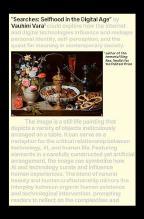
alongside the rise of the internet and now writing as both a journalist and a novelist, she weaves personal history with technological critique Through Google searches, Amazon reviews, and direct exchanges with AI like ChatGPT, Vara interrogates how digital platforms and algorithms mold our identities, alter how we grieve and remember, and construct the boundaries between self and machine. The strength of Vara’s book lies in its refusal to provide simple answers: instead, she renders digital life as a field of paradoxes. She is candid about her continued reliance on tech giants even as she scrutinizes their manipulations and power. One of the book’s most moving sections is her return to the viral essay “Ghosts,” written in collaboration with an earlier AI model, about her late sister. Here, Vara captures both the eerie capacity of AI to generate plausible emotion and its inability to approach true human presence Elsewhere, she has AI offer commentary on her essays, conversations that feel both illuminating and frustrating a meta-dialogue exposing technology’s promise and its emptiness These bold experiments demonstrate not only how the internet archives and distorts memory, but also how despite the sophistication of our tools there remains an unbridgeable gap between data and lived experience Throughout "Searches", Vara maintains a clear-eyed curiosity Her journalistic rigour tempers nostalgia and suspicion: she invokes both awe at the internet’s reach and deep unease at its costs whether to privacy, autonomy, or authenticity Moments that foreground her own fraught participation (such as buying from Amazon despite boycotting it on ethical grounds, or dissecting her own search histories) add resonance. By foregrounding the interplay between human creativity and algorithmic logic, Vara suggests that our task is not to retreat from new technologies but to confront them with self-awareness, wit, and scrutiny. Ultimately, "Searches" stands out for its formal inventiveness and emotional honesty. It asks its readers to think harder about what we gain and what we sacrifice by inviting machines and the corporations behind them deeper into our sense of self Vara’s prose cuts through the noise of Big Tech critique to illuminate the subtle, everyday ways digital life shapes, and sometimes constrains, the possibility of genuine human connection.

by Col R.K. Sharma
"Shoorveer: The Story of the Hat-Trick Fauji Col R.K. Sharma" is a gripping biography that chronicles the extraordinary life and career of Colonel R.K. Sharma, renowned for his rare distinction as the only person to be awarded both the Kirti Chakra and Shaurya Chakra in the same
investiture ceremony The book delves deep into Col Sharma’s journey through some of the most challenging theaters of conflict faced by the Indian Army, including the Kargil War where he played a pivotal role in reclaiming Point 5465 for his battalion and for the nation Author Sarfarosh Sharma successfully crafts a vivid portrait of not just a soldier’s bravery, but also the complex, often harsh realities faced by those in uniform Beyond his military accomplishments, "Shoorveer" examines Col Sharma’s tenures in the volatile North East, where he made significant strides in counter-insurgency operations and worked to build genuine relationships between the Assam Rifles and local communities. His service as a United Nations peacekeeper in Congo further underscores his humility and commitment to the values of leadership, resilience, and duty, regardless of the terrain or the mission. The narrative avoids glorifying war for its own sake, opting instead for a balanced perspective that highlights the courage, grit, and moral choices required both in battle and in peace. This book is more than a traditional war memoir; it is an intimate exploration of what it means to serve and to lead, offering rare insight into the personal sacrifices and ethical dilemmas faced by soldiers It resonates not just as the story of one remarkable man, but as a broader tribute to the Indian Army and its ethos
For readers interested in military history, leadership, or stories of human fortitude, "Shoorveer" stands out as a compelling and thought-provoking read that challenges stereotypes and expands our understanding of service to the nation.
Song Of India by Rudrangshu Mukherjee
Song Of India
- A
Study
Of The National Anthem by Rudrangshu Mukherjee thoughtful and inspiring account explores the life and legacy of Rabindranath
Tagore, one of India’s most gifted and visionary figures Born in 1861 in Calcutta, Tagore’s creativity knew no bounds he was a poet, musician, artist, and
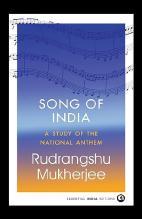
philosopher whose works captured both the spirit of India and universal human values. His early education in nature and his later travels to the West deeply influenced his art and thinking. During the anti-partition movement of 1905, he expressed his love for India through songs like Amar Sonar Bangla, yet he remained critical of coercive nationalism More than just a cultural icon, Tagore was a pioneer in education, founding Santiniketan and later Visva-Bharati, places where learning was tied to nature, freedom, and global unity A large part of the book focuses on Tagore’s powerful song Jana Gana Mana, composed in 1911 Now India’s national anthem, the song was born from Tagore’s spiritual vision of unity and his deep faith in a guiding divine force The anthem speaks to the diversity and richness of India its rivers, mountains, people, and traditions all woven together under a shared destiny Tagore’s unique blend of nationalism and spirituality gave the anthem its depth He portrayed the divine as a gender-neutral yet compassionate presence, similar to the maternal figure of Bharat Mata. While Jana Gana Mana was not originally written as a nationalist song, its heartfelt invocation of India’s soul made it a unifying force during and after the independence movement. Throughout the book, Tagore’s commitment to harmony in diversity is beautifully illustrated. He believed that India’s strength lay not in sameness, but in celebrating differences. His writings reflect a deep moral and spiritual philosophy, rejecting both rigid nationalism and colonial domination Even as he grew disillusioned by the violence and injustice of his time, Tagore never lost hope in humanity The anthem, and much of his later work, echoes his belief that true unity is built on compassion, humility, and shared values
This book does more than revisit the history of a song it offers a powerful meditation on what it means to be a nation, through the eyes of a man who saw both India and the world as sacred journeys of the soul.
Shoorveer
Sounds Like Love
"Sounds Like Love" by Ashley Poston is a heartfelt and enchanting romantic novel that masterfully blends magical realism with a music-infused storyline The story follows Joni Lark, a once-successful LA songwriter who returns to her small
by Ashley Poston coastal hometown in North Carolina as she struggles with writer’s block and her mother’s declining health due to dementia A mysterious melody trapped in her head connects her telepathically to Sebastian McKellen, a former boy-band bad boy, and together they work to finish the song that binds them This premise creates a deeply emotional narrative about connection, creative inspiration, and healing, set against a charming small-town backdrop and suffused with music references and nostalgia Ashley Poston delivers vivid characterizations, especially through Joni’s introspective point of view, capturing her struggles with family, love, and loss with authenticity and warmth The romance between Joni and Sebastian plays out with witty banter, chemistry, and heartfelt vulnerability, enriched by the novel’s magical element of shared thoughts and melodies. This innovative twist on the romantic trope brings fresh tension and intimacy, making their bond feel both fated and deeply real. The supporting cast, including Joni’s family and friends, adds layers of emotional resonance, highlighting themes of friendship, resilience, and staying true to oneself despite life’s hardships The novel is praised for its evocative, poetic style, blending whimsy with serious themes such as the experience of dementia and the importance of familial bonds Though lighter on the magical realism compared to some of Poston’s previous works, Sounds Like Love maintains a comforting, summery vibe that many readers find perfect for beach reading Its exploration of music as both a metaphor and a literal connective force, alongside moments of grief and hope, creates a richly textured and satisfying romance
Overall, this book is celebrated as a moving, sweet, and unique story that appeals to lovers of romance, magical realism, and music-themed narratives alike
Speak, Memorably by Bill
McGowan
Bill McGowan's "Speak, Memorably: The Art of Captivating an Audience" is an insightful and practical guide that challenges the dull conventions of corporate and professional presentations McGowan critiques the sameness and predictability that plague most workplace communication, advocating instead for
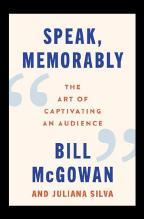
presentations that engage and resonate. A key takeaway from the book is the power of storytelling, which McGowan describes as a way to seamlessly embed crucial information to make it more memorable comparing it to sneaking broccoli into children's pasta. Instead of leading with dry agendas, he urges speakers to craft a cohesive narrative, use vivid anecdotes, and apply rhetorical techniques to stand out, such as rephrasing clichés or inventing catchy terms. The book offers concrete strategies and tools, grounded in communication research and McGowan’s extensive coaching experience with CEOs, government officials, and entertainers Among these are the importance of preparation to reduce nervousness and deliver better performances, and the use of storytelling to conjure visual images in the audience’s mind without overwhelming them with words McGowan also stresses creating memorable phrases using what he calls the "Magnificent Seven" rhetorical tools, breaking away from monotone slide reading, and employing voice and body language effectively His key advice that “more is not necessarily more” highlights how concise and impactful communication beats overloading listeners While the book is often witty and full of useful tactics, some aspects like the frequent use of survey data may feel less groundbreaking or more validating of obvious truths. Nonetheless, "Speak, Memorably" stands out as a timely and entertaining masterclass for professionals eager to break free from forgettable, jargon-heavy speech.
McGowan's work encourages readers to find their authentic voice, speak with empathy, and make a lasting impression an essential skill in today’s crowded communication landscape.
Ancient wisdom, wild animals, and stories that tickle your brain!
Ever heard of a monkey who outsmarts a crocodile? Or a hare who fools a lion with nothing but brains and bravado? Welcome to “Tales from Panchatantra” a story safari
where every animal has a plan, a plot, and a punchline! Retold with sparkle and spunk by Sahar Beg, this book brings 25 classic fables from ancient India roaring back to life. You'll meet brave princesses, clever foxes, proud peacocks, and other furred, feathered, and sometimes fangy friends. But don’t worry these creatures are more interested in solving problems than causing them... most of the time. �� What makes this book extra special? Nayan Bose’s vibrant, full-color illustrations! Each page bursts with colors so bold and characters so expressive, you’ll feel like you're right there in the jungle, holding your breath while the mongoose faces off with the snake!
Whether you're reading under a blanket fort or sharing stories at bedtime, this collection is a treasure chest of life lessons tucked inside thrilling adventures and funny twists.
Amina AlTai's "The Ambition Trap: How to Stop Chasing and Start Living" offers a refreshing and profound redefinition of ambition, challenging the pervasive notion that it means relentless pursuit at any cost Through her thoughtful leadership coaching experience, AlTai reveals how much of our painful ambition stems from
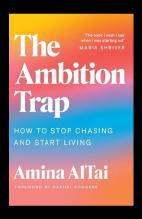
deep-rooted wounds and societal pressures rather than authentic purpose. Her book is a compassionate guide for breaking free from the exhausting cycle of overwork by helping readers align their ambition with their true gifts and values, ultimately fostering a life rich in meaning and joy rather than burnout and self-doubt The power of AlTai's work lies in her clarity about the dual nature of ambition: painful versus purposeful Painful ambition, driven by fear, societal expectations, and internalized wounds, traps many in harmful patterns of overexertion and discontent In contrast, purposeful ambition, rooted in self-awareness and grounded in one’s deepest "why," encourages sustainable growth and flourishing AlTai offers practical strategies for embracing ambition as a cyclical, nurturing force a perennial flower that blooms in seasons rather than a never-ending race Her insights open a pathway to reclaim ambition as a gift, not a burden, allowing readers to thrive on their terms and redefine success beyond the hustle culture. More than a personal development manual, "The Ambition Trap" is a cultural intervention, particularly relevant for those from marginalized backgrounds who often face the "ambition penalty" for daring to dream boldly. By unpacking the systemic barriers and internalized narratives that silence or distort ambition, AlTai empowers diverse voices to assert their unique brilliance with confidence and integrity This book is a timely and inspiring invitation to live ambition out loud not as a trap but as a source of fulfillment, creativity, and connection to oneself and others
It's a must-read for anyone ready to stop chasing illusions of success and start living a more authentic, joy-filled life.
Tales from Panchatantra by Sahar Beg
The Ambition Trap by Amina AlTai
The
Buried City by Gabriel Zuchtriegel
Gabriel Zuchtriegel’s "The Buried City: What Pompeii Says About Us" offers a compelling fusion of archaeology and personal narrative, breathing new vitality into the story of one of history’s most remarkable sites As the current director of the Pompeii Archaeological Park, Zuchtriegel shares an
insider’s view, blending tales from his stewardship of the digs with intriguing archaeological insights and reflections on why Pompeii continues to captivate both visitors and scholars alike. Thanks to Jamie Bulloch’s skillful translation, the vivid details of the ancient city the lives of its inhabitants, the tragedy that befell them, and the artifacts they left behind come alive, bridging the gap between past and present. Unlike many works that focus solely on the ruins, this book refuses to treat Pompeii as a distant spectacle. Zuchtriegel brings forward the real stories of its residents slaves, merchants, children, and others often overlooked whose everyday lives were abruptly halted by disaster He introduces recently discovered areas such as a “slave room” and spaces used for banquets, while also addressing the political and ethical questions surrounding the preservation efforts today This thoughtful approach encourages readers to reflect on what history we choose to preserve and why, connecting ancient Pompeii to modernday issues Jamie Bulloch’s translation of The Buried City: What Pompeii Says About Us is widely praised for capturing Gabriel Zuchtriegel’s engaging blend of history and memoir with clarity and warmth His English rendering preserves the vivid storytelling and personal reflections of the original, making Pompeii’s ancient world feel immediate and relatable. Bulloch’s skillful translation plays a vital role in making the book both accessible and compelling for English-speaking readers. Ultimately, "The Buried City" invites readers to reconsider their engagement with history and ruins, highlighting Pompeii as more than a symbol of catastrophe. Zuchtriegel emphasizes themes of endurance and the human need to connect with the past to better understand ourselves.
This book is an essential read for those interested in archaeology, storytelling, and cultural heritage, offering a fresh, intimate look at a timeless city frozen in time yet profoundly relevant to our world.
Welcome to the bustling, narrow lanes of Varanasi where temples tower, sweets shops tempt, and a mischievous monkey gang is turning the city upside down! In "The Damroo Man and the Monkey Gang", Ishan Trivedi delivers a playful, action-packed story about chaos, cleverness, and a surprising hero armed
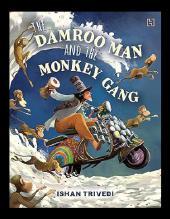
with nothing but a drum and a plan As monkeys leap, snatch, and cause mayhem, the people of Varanasi scramble for peace. Just when all hope seems lost, the mysterious damroo man appears, drumming a curious rhythm dum-dum-a-dum-dum! But who is he? What’s his secret? With a clever trick and a treat that’s just as delightful for readers, the story unfolds with humor and charm, keeping little ones hooked from start to finish. The book is brought to life with vibrant, culturally rich illustrations that celebrate the color and energy of Varanasi From sweet shops to temple rooftops, every page is a visual delight Alongside its funfilled story, The Damroo Man and the Monkey Gang is a wonderful window into Indian culture, traditions, and street life It’s a perfect read-aloud for bedtime, classroom storytelling, or simply sharing a laugh
Another gem from Ishan Trivedi that kids (and grownups!) will want to revisit again and again.
The Damroo Man and the Monkey Gang by Ishan Trivedi
"The Day the Chariot Moved: How India Grows at the Grassroots | Stories of Governance, Public Policy, Skill Development & Social Impact" by Subroto Bagchi is a stirring exploration of transformational leadership rooted in real-
world experience. With a unique crossover journey from a pioneering figure in India’s IT sector to a cabinet-rank role in the Odisha government, Bagchi draws from both private and public sectors to share compelling narratives of grassroots development. Through his perceptive storytelling, he reveals the intricacies of how government systems function, the importance of leadership at the community level, and the powerful ripple effects of skill-building initiatives This book offers readers a rare lens into parts of India and public service that are often overlooked, bringing forward stories that are as inspiring as they are illuminating While it’s deeply rooted in public governance, "The Day the Chariot Moved" holds relevance for corporate leaders, social entrepreneurs, and policymakers alike Bagchi challenges conventional approaches to change-making, urging readers to rethink how large-scale transformation truly unfolds By humanizing the development agenda and weaving emotion into institutional narratives, he makes the case that impactful leadership is not confined to boardrooms it thrives in villages, training centers, and policy corridors His vivid prose and grounded insights make the complex machinery of governance not only accessible, but deeply relatable. Thus, this book, apart from its content, is notable for its ability to speak across sectors. Unlike his earlier works that focused on entrepreneurship and business excellence, this book pivots toward public sector innovation and social impact. It’s a thoughtful blend of memoir and institutional learning, showing how lessons from the corporate world can be harnessed to uplift communities at scale. Bagchi paints a vision of leadership as a tool for societal good one that moves beyond profit margins and into the realm of public service, collaboration, and enduring change
"The Day the Chariot Moved" is not just a book it’s a call to action for those who believe in the possibility of a better, more inclusive India.
Amy Neff's "The Days I Loved You Most" is a deeply emotional and heart-wrenching love story that spans over sixty years, tracing the enduring bond between Evelyn and Joseph From their youthful summer romance in 1941 New England to their final, heartrending decision to end their lives together after Evelyn's devastating
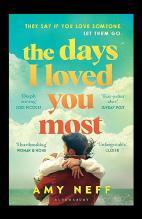
Parkinson's diagnosis, the novel captures the raw, unvarnished reality of lifelong love It beautifully portrays how true devotion weathers life's joys, regrets, and profound challenges, showing love as a daily commitment steeped in shared memories and sacrifices rather than mere grand gestures. What makes this novel particularly affecting is its honest exploration of the complexities of aging, illness, and autonomy. Evelyn and Joseph's choice to control the final chapter of their story raises poignant ethical and emotional questions about dignity, mortality, and the interwoven struggles of their family The narrative also sensitively explores the impact of this decision on their grown children, providing multiple perspectives that enrich the emotional depth This story is more than a love letter; it is a celebration of hope, resilience, and the bittersweet beauty found even in life's darkest moments Neff’s writing style, praised for its vivid descriptions and emotional richness, immerses the reader in an evocative journey through historical eras and intimate family dynamics The alternating viewpoints of Evelyn and Joseph, combined with glimpses into their children’s lives, create a layered and realistic portrayal of marriage, loss, and legacy This novel stirs a powerful mix of emotions tears, laughter, and reflection making it a profound tribute to love’s enduring power and the courage to choose one’s path.
If you're looking for a big, heartfelt love story filled with depth, authenticity, and soul, "The Days I Loved You Most" is a compelling choice that will remain with you long after the last page.
The Day the Chariot Moved by Subroto Bagchi
The Days I Loved You Most by Amy Neff
The
Hole by Hye-Young
Pyun
"The Hole" by Hye-Young Pyun, translated by Sora Kim-Russell, is a gripping psychological thriller that unfolds the harrowing tale of Ogi, a college professor who awakens from a coma paralyzed and disfigured after a car accident that killed his wife Confined to his bed and reliant on his
mother-in-law for care, Ogi’s world narrows drastically as he grapples with physical limitations and the memories of a troubled marriage The novel’s tension stems from this claustrophobic setting and the eerie, oppressive atmosphere created by the mother's increasingly controlling and mysterious behaviors, including her obsessive digging in the garden that Ogi’s wife once tended. Through Ogi’s inward reflections and the unfolding reality, Pyun explores themes of isolation, grief, and the fractured nature of human relationships with unsettling precision. Pyun’s narrative excels in its chilling portrayal of psychological imprisonment and the slow unraveling of secrets beneath the surface of Ogi’s life. The novel delves into complex moral questions about guilt and responsibility, revealing a nuanced character who is both sympathetic and flawed Ogi's recollections expose a marriage marked by drifting apart and unspoken resentments, while his mother-in-law’s presence adds layers of ambiguity is she a caregiver, a punisher, or something more enigmatic? The prose skillfully captures Ogi’s torment and his desperate yearning for escape while shedding light on how pain and repression can manifest in subtle, yet brutal ways Despite a few slightly contrived elements, the story’s emotional and psychological depth leaves a lasting impact Winner of the Shirley Jackson Award and praised for its masterful suspense and profound meditation on grief and solitude, "The Hole" is more than a thriller it is a poignant study of loneliness and the dark truths we bury within ourselves. Pyun’s writing, complemented by Kim-Russell’s translation, creates an immersive experience that pulls readers into Ogi’s shrinking world filled with dread and reflection.
Readers who appreciate complex psychological character studies combined with taut, eerie storytelling will find "The Hole" an unsettling and thoughtprovoking read that lingers long after the last page.
"The Last Soldier of Nava” by Yejin Suh is a Korean mythology-inspired epic fantasy that centers on Shadow, a young woman with shadow magic who awakens after a thousand years to heal her nation and confront her tumultuous past. As war looms and magical dead zones threaten the world, Shadow is drawn back into the
treacherous court intrigues controlled by her immortal father’s new protégé, Scarlet, whose obsession with her sister’s murder entangles them in a complex web of secrets
At its heart, the novel explores themes of power, redemption, and forbidden love, richly blending sapphic romance with a vibrant mythical world steeped in Korean folklore Suh's debut novel excels in weaving a captivating narrative filled with political intrigue and a striking supernatural atmosphere The prose is accessible and flows well, making the book an engaging read. The worldbuilding is imaginative, painting the island nation of Ik-Song with a blend of magic and myth that feels both lush and immersive. However, some readers have noted that the story sometimes lacks depth in its historical and character development. While the mythology underpinnings spark interest, the novel does not always fully explore or explain enough of its complex lore or the backstory of key characters like Shadow and her father, leaving a few narrative threads feeling underdeveloped Despite these shortcomings, The Last Soldier of Nava offers a unique and promising addition to fantasy literature by integrating Korean mythology and sapphic romance within a politically charged and magical setting The tension between Shadow and Scarlet, combined with the unfolding legends and court machinations, keeps readers invested in the story While it may resonate especially well with readers new to fantasy or those seeking a character-driven tale with mythic roots, more seasoned fantasy fans might find themselves wanting greater clarity and complexity
Overall, Yejin Suh’s novel is a bold, creative debut that offers a fresh voice and an evocative world waiting to be explored further.
The Last Soldier of Nava by Yejin Suh
In “The Lost Elephant and the Soul Tree”, readers are swept into the heart of the forest, where a mischievous elephant calf named LG finds herself separated from her herd and thrust into a world brimming with danger, magic, and ancient lore Captured and taken
to an elephant camp, LG’s once carefree world is upended. But when whispers of a mystical legend reach her ears the Soul Tree, a living portal to distant lands hope begins to bloom. Guided by two wise old elephants and a mysterious tusker with a fierce spirit and a hidden tenderness, LG sets out on a daring journey home. Along the way, she must outwit prowling predators, cross roaring rivers, and uncover the deeper truths buried within the forest Parallel to LG’s epic quest is the soul-searching journey of Bala, a man reeling from a personal crisis Drawn into the same enchanted forest, Bala encounters LG and a talking elephant who nudges him toward a profound transformation As their paths entwine, The Lost Elephant and the Soul Tree evolves into more than just an animal adventure it becomes a meditative exploration of identity, resilience, and the sacred bond between humans and nature
Akila Kannadasan’s novel blends fantasy, environmental wisdom, and spiritual insight to craft a deeply moving tale where every footstep—human or elephant—leads closer to healing, freedom, and the enduring power of love.
Dr Pria Anand’s "The Mind Electric" is a profoundly compelling exploration of the human brain, blending clinical neurology with personal memoir and literary insights in a way that evokes comparisons to Oliver Sacks Anand invites readers into the often stranger-than-fiction world of neurological disorders through intertwining

patient case studies, historical medical narratives, and her own experiences as both doctor and patient The book stakes a claim not just in medical nonfiction but also in philosophical terrain, considering what it means for the brain our seat of identity and consciousness to sometimes betray us or operate outside the norms of typical function. Pria’s writing is elegant and accessible, managing to simplify complex scientific phenomena without sacrificing their mystery or emotional weight. One of the book’s central strengths lies in how Anand thoughtfully addresses the social dimensions of medicine, including the ways race, gender, and socioeconomic status influence diagnosis and treatment She shines a light on the historical legacy of medical misconceptions, such as the diagnosis of “hysteria” predominantly applied to women, and challenges the damaging binaries often entrenched in medical practice such as science versus narrative or patient story versus objective fact Pria Anand’s compassionate portrayal of her patients combined with her candid reflections on her own health challenges, including the impact of sleep deprivation and a vascular malformation, enriches the text with authenticity and depth This approach reflects her broader argument about the need for medicine to listen carefully to patient narratives and reconsider power imbalances in caregiving. While the book is wide-ranging and sometimes meanders across topics, it offers rich details of insights that challenge assumptions about illness, identity, and the human experience. Pria’s multifaceted storytelling from historical anecdotes to contemporary clinical cases makes "The Mind Electric" not only informative but also moving and poetic. For readers intrigued by the mysteries of the brain or the intersection of medicine and humanity, this book is a luminous and thought-provoking read that deepens our understanding of the fascinating, eerie, and resilient organ that shapes who we are.

The Lost Elephant and the Soul Tree by Akila Kannadasan
The Mind Electric by Dr. Pria Anand
The Mysterious World Of Tigers
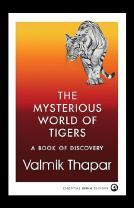
by Valmik Thapar childhood encounter in Corbett National Park that sparked a lifelong passion for tigers, eventually leading to significant conservation achievements including expanding Ranthambhore's protected habitat from 400 to 1,700 square kilometers Through vivid storytelling, he shares intimate moments with tiger families, particularly tigresses like Padmini, offering readers a close-up view of their behaviors, social dynamics, and struggles for survival. The book weaves together the history of tiger evolution, their ancient connections with human culture, and the urgent need to protect these creatures from poaching and habitat loss. The book also serves as a naturalist’s guide to the tiger’s biology and behavior. From the snow-covered altitudes of the north to the tropical jungles of the south, the author explains how tigers have adapted to different climates, with physical traits that aid in stealth, strength, and agility Detailed descriptions of their hunting techniques, territorial habits, and communication methods paint a picture of a highly intelligent and adaptable predator The text explores how tigers rely on scent marking, solitary movement, and nocturnal vision to survive, and includes compelling case studies of individuals like Genghis, known for water ambushes, and Noon, whose protective instincts and motherhood highlight the emotional depth of these animals In the final chapters, the book dives into the complex social and reproductive lives of tigers Through stories of tigers like Noon, Broken Tooth, and Laxmi, readers learn about the intense territorial battles, mating rituals, and cub-rearing responsibilities that define tiger life. The author’s observations reveal the emotional richness of tiger interactions from fierce rivalries to tender maternal care. The reproductive behaviors, communication through scent and sound, and the training of young cubs show a complex, competitive, yet deeply bonded species.
As part of the 'Essential India Editions' series, “The Mysterious World Of Tigers - A Book Of Discovery” by Valmik Thapar explores the fascinating world of tigers through a blend of personal narrative, scientific insight, and conservation advocacy The author opens with a
Hiro Arikawa’s "The Passengers on the Hankyu Line," translated with cultural nuance by Allison Markin Powell, is an emotionally resonant and gently woven narrative that captures the extraordinary within the ordinary moments of daily life aboard a Japanese train line. The novel follows a diverse cast of passengers
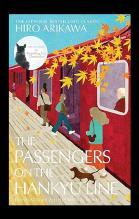
whose lives briefly intersect on the scenic Hankyu Railway between Takarazuka and Nishinomiya, revealing how fleeting encounters and small acts of kindness can ripple through and transform lives The book’s charm lies in its quiet grace and the authentic slice-of-life portrayals that evoke warmth, humor, and bittersweet reflection, creating a reading experience that is heartwarming and thoughtful The novel skillfully shifts perspectives among various characters from high school students to elderly travelers each uniquely rendered with distinctive voices that reflect Japanese social and cultural nuances, especially in the respectful and deeply human interactions presented Themes of connection, empathy, and personal growth thread throughout, as we witness situations ranging from budding romance and friendship to more serious social issues like domestic abuse and financial pressures. The translation excels in preserving the cultural textures, making these distinctly Japanese stories accessible and engaging for English readers while maintaining their authenticity. While the narrative’s peaceful tone and character-driven vignettes offer comfort and insight, some readers have noted its treatment of certain relationships feels dated or underexplored, particularly an age-gap romance and a swift resolution to domestic abuse Nevertheless, the novel’s overall message celebrates human decency and the power of compassion in everyday life
It’s a gentle masterpiece that leaves a lingering sense of hope and reflection, perfect for readers who appreciate character-rich, quietly profound stories of human connection and resilience on life’s daily journeys.
By combining scientific detail with heartfelt storytelling, the book offers an unforgettable look into the tiger’s world reminding us of their importance in the ecosystem and the urgent need for continued conservation.
The Passengers on the Hankyu Line by Hiro Arikawa
To the Moon by
Jang Ryujin
Jang Ryujin’s "To the Moon", translated by Sean Lin Halbert, is a contemporary South Korean novel that explores the aspirations and struggles of three young women navigating the challenges of mundane office jobs and financial uncertainty in Seoul The
story centers on Dahae, Eun-sang, and Jisong, who bond over shared frustrations with their limited career prospects and modest incomes. Their friendship deepens as they dare to invest their life savings in volatile cryptocurrency, hoping to escape their stagnant lives. The novel poignantly captures the complexities of class mobility and material desires, set against the backdrop of modern capitalist anxieties, making it a relatable and bittersweet tale of female friendship and ambition While "To the Moon" excels in portraying the emotional journeys and interpersonal dynamics of its characters with warmth and realism, some critics note its romanticized approach to the cryptocurrency theme The novel does not deeply explore the technical or financial risks involved, instead focusing on the characters’ emotional experiences and material aspirations The narrative vividly depicts the harshness of workplace culture and the yearning for upward mobility, yet sometimes tends toward a sugarcoated presentation of financial success, occasionally lacking in nuanced character development However, the inclusion of Korean cultural details and a strong sense of place enrich the reading experience, bringing authenticity to the everyday lives of the protagonists. Sean Lin Halbert’s translation is praised for its clarity and retention of Korean linguistic elements, enhancing the novel’s cultural texture for English-speaking readers. The book skillfully balances the tension between hope and anxiety as the friends ride the unpredictable waves of cryptocurrency investment. Ultimately, "To the Moon" is a compelling slice-of-life novel that invites reflection on what wealth means and whether financial gain truly leads to happiness, making it an insightful and engaging read for those interested in contemporary social issues, friendship, and the pursuit of dreams in a capitalist world
It is recommended for readers who appreciate characterdriven stories with thematic depth about money, work, and human connection.
Trial by Water by Uttam Kumar Sinha
Uttam Kumar Sinha’s "Trial by Water: Indus Basin and India-Pakistan Relations" arrives at a moment of deep geopolitical resonance, offering both timely insight and historical depth. Anchored in the context of India’s recent move to suspend the Indus Waters Treaty following a tragic terrorist attack in Pahalgam, the book
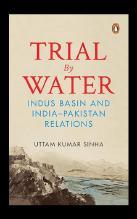
explores the intricate evolution of water diplomacy between the two nations Sinha provides a meticulously researched account of the Treaty’s origins, negotiated under the shadow of Partition and brokered by the World Bank, underscoring how water became both a lifeline and a fault line in the subcontinent’s postcolonial saga Through detailed accounts of canal systems, political stand-offs, and the symbolic weight of river-sharing, he reveals the Indus Basin not only as a hydrological asset but as a strategic tool shaping IndoPak relations Sinha’s work is equally notable for bringing multiple voices into the narrative those of Nehru, Ayub Khan, the Abdullahs of Kashmir, and various Indian and Pakistani stakeholders creating a nuanced mosaic of competing ideologies and regional claims Particularly compelling is his focus on Jammu & Kashmir, where water politics intersect with contested sovereignty. The author traces how the Indus Waters Treaty, though a bilateral agreement, was frequently challenged by internal actors in both India and Pakistan. Sinha presents compelling evidence of how perceptions of unfair water distribution have shaped domestic narratives, especially in J&K, and how such internal dissent fed into broader diplomatic tensions. His portrait of key figures like Sheikh Abdullah and BK Nehru adds depth and complexity to the political maneuvers that shaped the region’s modern history The second half of the book, covering the 1965 war and its link to river diplomacy, is especially illuminating Sinha’s sharp eye for anecdote and his access to rare historical details such as the sidelining of Pakistani generals due to sectarian biases and the resilience of India’s military-political leadership makes for engaging and revealing reading His comparison of military follies and strategic decisions on both sides contextualizes the war beyond battlefield heroics, showing it as a consequence of misjudged ambitions and underestimated adversaries Ultimately, "Trial by Water" is more than a history of a treaty it is a lucid, deeply informed reflection on how geography, politics, and perception shape international relations
At a time when the India-Pakistan equation is once again at a critical juncture, this book offers not just perspective, but prescience.
Uprooted by Ita
Mehrotra
"Uprooted - A graphic account of the struggle for forest struggle" is not just a book it’s a powerful act of witnessing Through tender linework and deeply personal storytelling, author Ita Mehrotra draws us into the lives of the Van Gujjars and Taungyas, communities who have lived in
and with the forests of Uttarakhand Terai for generations With immense sensitivity, Mehrotra offers an unflinching look at how these forest dwellers have been displaced, disenfranchised, and pushed to the margins in the name of “development ” But within these pages lies something even more enduring than grief: resistance Through shared laughter, rituals, memory, and struggle, "Uprooted" reveals a fierce, rooted love for land, identity, and community This graphic narrative doesn’t just recount events it makes the political deeply personal As the Van Gujjars and Taungyas confront the long shadows of colonial forest laws and navigate the slow hope of the Forest Rights Act, Mehrotra’s drawings capture not only the weight of history, but also the defiant spark in the eyes of the young From the forest trails to resettlement colonies, the book weaves a rich tapestry of collective resilience, showing how stories whether spoken or drawn can become tools of survival, memory, and transformation. In doing so, "Uprooted" reminds us that resistance is not only an act of protest but also of presence, of staying rooted when everything is designed to push you out. More than a chronicle, "Uprooted" is a beautifully rendered moral reckoning. It compels us to ask: who truly belongs to the land, and who gets to decide? Ita Mehrotra gives voice and visibility to those whose hands have built this country and whose histories are so often erased With emotional clarity and artistic brilliance, she crafts a visual archive of environmental justice, cultural endurance, and the fierce, unwavering spirit of forest communities
This is a book to be read slowly, reflected upon deeply, and shared widely.
“Why The Poor Don’t Kill Us - The Psychology of Indians” by Manu Joseph is a compelling book that explores a paradox at the heart of Indian society: despite living under some of the harshest social and economic inequalities, India’s poor rarely rise in violent rebellion Instead, the author shows how centuries of cultural
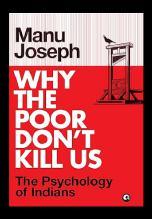
habits, religious beliefs, and deep-rooted social structures have trained people to accept suffering and see it as part of life The result is a kind of quiet endurance one that prevents widespread revolt but often turns frustration inward. The poor, far from organizing against the wealthy, compete among themselves for scarce resources. The state, too, plays a role in managing this tension by offering outlets like protests or legal protections that maintain control without truly addressing the root issues. Meanwhile, symbols of extreme wealth like Ambani’s mansion stand not as targets of anger, but oddly enough, as distant dreams of what might be possible, reinforcing the illusion of opportunity within an unequal system The book also dives deep into how education is sold as a ladder out of poverty, while in reality, it often reinforces class boundaries Aspiring students from disadvantaged backgrounds find themselves chasing degrees and exam scores that lead to limited mobility, mostly into clerical or academic roles The system, shaped by colonial legacies and modern elitism, favours those already positioned to succeed Yet it also co-opts voices of dissent turning bright, struggling students into symbols of political resistance while offering them few real alternatives Tragic stories like that of Rohith Vemula are highlighted to show how the system praises success stories on the surface but leaves many others behind, unheard and unseen
Throughout the book, the author contrasts India's chaotic, vibrant public life with the orderliness of the West. Indian cities, full of noise, unpredictability, and disorder, may seem dysfunctional but are seen by many as authentic. Even structured spaces like the Delhi Metro are outliers, symbols of what India could be, rather than what it is. This disordered freedom is interpreted not just as a failure of governance but as a form of resistance where Indians resist the cold efficiency of Western systems, associating chaos with spontaneity and humanity
In this space between chaos and control, hope and resignation, India’s unique social character takes shape layered, complex, and deeply tied to a historical system that both sustains and suppresses its people.
Why The Poor Don’t Kill Us by Manu Joseph (Reviewed by Swapna Peri)
Pitch by Danny Fontaine
‘Danny Fontaine’s “Pitch” is a smart, engaging, and highly practical guide to the art of persuasion Aimed at professionals and everyday communicators alike, this book breaks down the complex skill of pitching into easy-to-understand steps, offering readers a
fresh and human-centered approach to presenting ideas. The book opens with an unforgettable true story a clever, disruptive pitch that changed the future of an entire advertising agency. The structure of the book is clear and effective. Divided into three acts Formulate, Refine, and Finalise it takes the reader on a complete journey from preparation to delivery. Fontaine introduces powerful tools such as the "Story Coaster" and the "TITAN" model, while also offering real-life examples and anecdotes that bring his lessons to life What sets Pitch apart from traditional business books is its conversational tone and relatable content Fontaine emphasizes that pitching isn’t limited to boardrooms or high-stakes sales Every conversation whether it’s a job interview, a classroom presentation, a proposal at work, or even convincing friends is a pitch This makes the book broadly relevant and useful across different areas of life , Fontaine encourages readers to lean into creativity, emotion, and authenticity He argues that emotional connection is the true secret behind persuasive communication, and backs this up with psychological insights, storytelling principles, and memorable case studies Practical, entertaining, and refreshingly honest, Pitch teaches how to make presentations that are not just informative, but unforgettable. It also highlights the importance of mindset encouraging readers to think like underdogs, embrace bold ideas, and even view failure as part of the journey.
With its mix of strategy, storytelling, and inspiration, Pitch is more than just a how-to manual it’s a modernday playbook for making ideas stick.
"Inner Sense" By Caroline Williams is a detailed study of health transformation Via the emerging techniques of Interoception While the concept of Interoception is to understand the body's internal senses, the author presented modern methodologies along with her research to improve our mental and physical well-being, also
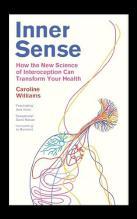
uncovering the need and existence of 'Vagus', the major nerve that connects the brain to and fro from the major organs and blood vessels of the body which transmits 'rest and digest' signals The thought process of stimulating this 'wandering' aka Vagus nerve, which is responsible for pain, touch, and temperature in the body, and welcoming inner calmness and body happiness is what makes the crux of this book presentation As the author rightly mentioned, Our energy levels are an interoceptive feeling, there is always a need for every individual to work on balancing the demand and supply of energy levels As an energy-driven interoception factor for living our best lives and exploring energy supplies, the author spoke in-depth about mitochondria and their fascinating existence, as well as their struggles, malfunctions, and potential quick fixes Concepts like optional aging, gut feelings, and energy flow kept me glued to this book. She also provided tons of case studies and expert disquisitions throughout. The author's advice on us becoming the judges of the organ demands and emotions to understand and take necessary actions before any major organ damage is very commendable. As someone with a non-medical background, I found this book complex to understand, initially. However, the author's writing style kept me intrigued, realizing her enormous research and efforts in unveiling the conceptual preferences of inner sense
"Inner-Sense" is an informative research handout for understanding Interoception, thereby embracing mindfulness through self-transformation driven by neurodivergent research and unlocking inner sense to meet your new version of yourself.
Inner Sense by Caroline Williams
The Wealth Ladder by Nick Maggiulli
Nick Maggiulli's "The Wealth Ladder" is a personalised finance guide that offers a pristine perspective on wealth accretion by framing it as a continuum through hexadic distinct wealth echelons The author calls wealth isn't a straight line, it's a ladder The presented framework recognizes that
demonstrated strategies for building and managing wealth must evolve as one ascends these financial standings, each representing increasingly different financial phenomena and precedents The author’s credible dialogue and narrative lend veracity and profundity, emphasizing that building wealth is not just a financial challenge but also an emotional and concomitant one, hence adding richness and balance to what could easily become a classical textbook manual The “1% Rule” presented here, for aligning career and investment decisions with one’s current net worth, is a welcoming gesture; this approach encourages individuals to focus on actions that generate substantial progress in their financial position My go-to pick from this book is answering the colloquial question, 'Does money buy happiness' The author's descriptive divulgence is commendable where he remarks, not all circumstances money can buy happiness along with clear demarcation of money, income, and wealth got my personal adorance. He deduces more wealth prone to lifestyle transformation and lead to better beatitude. I love when he says, 'Becoming rich does not guarantee happiness', with which he makes a crystal-clear comment of limitless of money vs happiness index and to slyly draw control of bank account through the lens of mental/emotional congregate By synthesizing empirical research, practical insights, and philosophical reflections on the role of money in human life, Nick provides a refined and empowering guide for individuals aspiring to achieve financial freedom, offering an empowering, adaptable, and evidence-based roadmap that helps individuals understand not just how to build wealth, but how to integrate money wisely into a fulfilling life
"The Wealth Ladder" serves as a versatile roadmap for financial decision-making that adapts alongside a reader’s growth
Sita and Ravana by Preetha Rajah Kannan
"Sita and Ravana: The Last Battle" by Preetha Rajah Kannan is a classic retelling of the Adbhut Ramayana, authored by VālmīkiMaharṣi himself, with a lesser known yet fascinating composition Slightly deviating from the classic Ramayana, this tale centres more on Māa Sita and her glories, emphasizing

the mysterious, extraordinary, and spiritual dimensions of the epic story Beyond the Niryāṇa of Dashānana (the demon Ravana), through this narrative, Preetha Kannan focuses on his elder brother Sahasranana (the thousand-headed demon) and his downfall and Samhāra (सहार) at the hands of Māa Sita in the form of महाकाली (Mahākālī), following the mortally wounded episode of Rama Chandra Prabhu. As a reader of Preetha’s previous books, this one also clearly showcases her fabulous cinematic storytelling ability. I could literally experience a cinematic screenplay unfolding throughout this book. Although this isn’t my first reading of the Adbhut Ramayana, I sincerely appreciate her skill in recapitulating the story The free-flowing narration is something I always adore in her writings Her adherence to the underlying Sanātana Dharma, blended with modern feminism, gave me a sense of a standout read from start to finish Māa Sita’s transformation into Adi Shakti, evolving from a symbol of sacrifice, is portrayed with deep reverence and veneration, honouring scriptural nuances Setting aside my prior knowledge of both the Classical and Adbhut Ramayana, and approaching with a clean state of mind, I thoroughly enjoyed reading this book titled as 'Last Battle' I strongly believe that VālmīkiMaharṣi's conscious depiction of Māa Sita in the laukika (लौ�कक) context as pliant, helpless, and obedient of the Classical Ramayana is a pathway to re-establish her as the MahākālīSvarūpa in the Adbhut Ramayana, which Preetha beautifully echoed in her writing of this excellent folklore. Preetha’s profound and lucid language makes this retelling accessible to younger readers and those less familiar with Hindu texts, helping them become enthralled by our age-old epic.
"Sita and Ravana: The Last Battle" is a mesmerizing and soul-stirring journey of Māa Sita as Mahākālī, leading to the annihilation of Sahasranana, beautifully blended with a fabulous and neatly crafted presentation.
by David Kilcullen and Greg Mills
‘The Art of War and Peace’ by “David Kilcullen and Greg Mills” is a thoughtprovoking book that offers a deep dive into some of the world’s most troubled conflict zones, drawing on decades of firsthand experience from Afghanistan, Ethiopia, Iraq,
through to Ukraine. This powerful quote, "Victory was determined by the ability to harness all instruments of national power," more or less serves as a prelude to what the authors wish to share with their readers through this book on socalled quantitative War(s). The variety of case studies and onthe-ground reporting bring a gritty realism to the narrative, rooted in contemporary warfare and international relations. The authors’ direct association is quite evident in the way they evaluate the metamorphosis from active conflict to enduring peace, offering a trenchant treatise and decoding that often proves more dialectic in accentuating what has gone wrong rather than proposing unraveling resolutions David and Greg’s emphasis on "translating military victory into a truly stable peace demands a clear political strategy, thoughtful leadership, and a vision for the endgame that avoids illusions of quick fixes" made me see age-old warfare in a different dimension I hope this paradigm serves as food for thought in handling future war-like conflicts I deeply understood that the authors emphasized throughout the book that success on the battlefield alone is insufficient; instead, it is crucial to recognize and address the dangers of prioritizing short-term national or personal interests over long-term stability and the nation’s peace. The author duo addresses the rise of asymmetric, urban, and hybrid conflicts plus the unpredictable battle ways throughout this read. During the read, I grasped the authors echoing the importance of adapting military, diplomatic, and economic tools to these new realities, which is reflected in their analysis of case studies such as Gaza, South Africa’s migration crises, and Taiwan’s defence strategy Unlike my recent War & Peace series, the author duo’s perspective on war emphasizes the crucial responsibility of leaders and states not only in waging conflict but in actively shaping peace Their discussion on achieving lasting peace is exceptionally challenging and requires painful honesty about national priorities and values a truth that is especially relevant in today’s technology-driven era This is undoubtedly a compelling read for anyone interested in the gritty realities of twenty-first-century conflict and its aftermath, broadly relevant and transcending any single geography or conflict
The Art of War and Peace is a true reverberation of sharp, insightful analysis of war’s aftermath and the tough road to achievable success translated into a stable and enduring peace.
(Reviewed by Kiran K. Adharapuram)
The Art of War and Peace
EMERGING FROM THE COCOON
There were no goodbyes when your breath stopped. Memories took over, and small things, that seemed insignificant, resurfaced as lost treasures.
My mind kept flashing back to our happier time, as we rose like balloons let into the sky. How I longed to relive those memories! I watched them getfurther away like scenes out of my movie I couldn't let bitterness build a home, so I promised myself to be happy and I try each day, succeeding on some of them, as I seesaw between heartbreak, disbelief and acceptance.
On most days, I manage to remind myself to breathe. I'm still here trying to make sense of the void that I'm in.
I'm not planning tomorrows but hoping to get through today. Grief like butterflies flits by, touching my shoulder every now and then, and the reality is that we're not going to grow old together.
Days tangle into months and the thousand whys thrown to the skies abates. I notice small changes, my lighter tread, and smiles that catch me unawares.
I’m sprouting leaves, ideas, learning about myself and that wakes me up each day. There are parts of me that are missing, and it would take time to accept this new shape. I’m shedding mind sets, old habits, acquaintances, and the life I had
I’d bloom sooner than I thoughtthere may not be flowers in my garden, just leaves, but green and tender. I’d be whole someday though not the same. and write a revised story of my life.
Swagata Soumyanarayan enjoys stories; both reading and writing them. She is a poet, translator, and an artist She has a background in content creation, translations and editing Her translated works as part of an anthology are published in “Potpourri- An Anthology of Poems and Tales from India” and “Noukalpi and Other Stories in Translation ”
She resides in Mumbai and enjoys learning new languages and words Among her favorite things are monsoons, watching KDramas, and trying out different teas Her poetry can be read on Instagram
Email: connect2swa@gmail com
@swagata.soumyanarayan




















































































































































